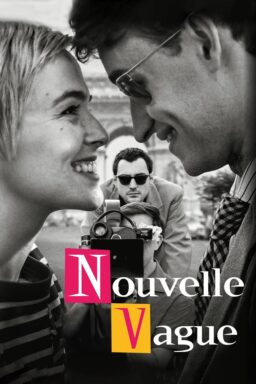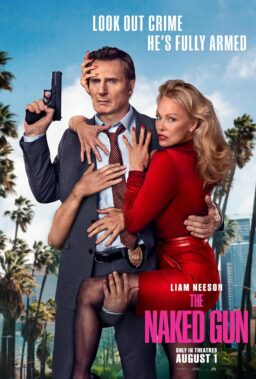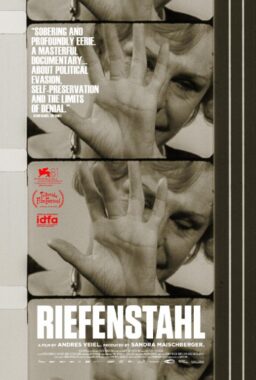“A spectre is haunting contemporary cinema: the shaky shot.”
So writes David Bordwell, in connection with the growing controversy over the hyperkinetic filming and editing style of such movies as “The Bourne Ultimatum.” This is a spectre that will not go away. The quick-cutting of “Ultimatum” (average shot length: 2 seconds) has inspired a flood of messages to my Answer Man column, and now Bordwell, probably the most-respected film academic, forwards me a post from movies.com in which “sfjockdawg,” the writer, says:
“We went to see BU on the IMAX in San Francisco. Near the end, when Webb is having the flashback to when he is forced to show his commitment to the project, the lady next to me spontaneously unleashes a huge amount of vomit all over my leg and all over the floor in front of her! I have never experienced anything like it in my life! Now all the action sequences, the nauseating use of moving cameras, and the relentless score were enough to make anyone dizzy, but to throw up?”
Bordwell tells me he knows the post is accurate, because a former student of his was an eyewitness. The “shaky-cam” issue is one on which I have been too slow to react. In years past, the Answer Man got complaints about the hand-held opening sequence of Woody Allen’s “Husbands and Wives” and the whole of “Moulin Rouge,” but I guess I considered them the grumblings of an eccentric minority. However, the DVD of “Moulin Rouge” sold like gangbusters, and people wrote me it was because “they could get further away from it.”
The “shaky-cam” issue is one on which I have been too slow to react. In years past, the Answer Man got complaints about the hand-held opening sequence of Woody Allen’s “Husbands and Wives” and the whole of “Moulin Rouge,” but I guess I considered them the grumblings of an eccentric minority. However, the DVD of “Moulin Rouge” sold like gangbusters, and people wrote me it was because “they could get further away from it.”
Now readers have questioned my sanity after my “Ultimatum” review, in which I wrote that director Paul Greengrass “creates (or seems to create) amazingly long takes but does it without calling attention to them. Whether they actually are unbroken stretches of film or are spliced together by invisible wipes, what counts is that they present such mind-blowing action that I forgot to keep track.”
Well, obviously, they are far from unbroken. The intended illusion worked for me. Even the film’s assistant editor, who I queried, could only recall a 20-second unbroken take. Readers asked if the editing style didn’t bother me. Actually, no, although I was toward the rear of a large theater and not confronted by IMAX.
But it bothers a lot of people. Bordwell has a detailed analysis of the phenomenon on his blog (www.davidbordwell.net/blog/?m=200708) and Jim Emerson, the editor of www.rogerebert.com, has another in his blog on my site (http://blogs.suntimes.com/scanners/). On the site itself, you will find a long collection of reader complaints.
What I conclude is that this phenomenon is real, that many people are disturbed by the vertiginous way that hand-held cameras interact with fast-cutting, and that it has remained under the radar of many film critics because, perhaps, we are hardened to it. In movies like “Run, Lola, Run,” where it is used with more continuity and control, it can be wonderfully effective. But ‘Ultimatum,” for many people, is apparently a case of going too far.
In their discussions of “classical style” in film versus the emergence of newer styles such as quick-cutting, Bordwell and his equally expert wife, Dr. Kristen Thompson, have been far in front of the curve. It was Bordwell who first armed his students with clickers and sent them to theaters to count the actual shots in a movie, divide them into running time, and come up with the ASL (average shot length).
Now a whole website is devoted to that practice. On www.cinemetrics.lv, you will find the theory, measuring methods, and software so that volunteers can determine the ASL of a film on their home computers. The ASL of John Cassavetes’ “Love Streams” is 15.6, the ASL of “Citizen Kane” is 11.4, the screwball comedy “His Girl Friday” is 15, “Pulp Fiction” is 7.9, and “The Incredibles” is 2.5.
While two seconds is a short shot, remember that an ASL is obtained by averaging in all of the shots, long and short, that there are 24 frames of film to a second, and that the human eye can actually perceive one frame (as with the Satanic face in “The Exorcist”). What is crucial (the “vomiting point,” we could call it) is apparently when a film doesn’t vary its pace, but is largely made of short hand-held shots, edited together by quick cuts that ignore spatial continuity.
The shaky-cam, queasy-cam, or whatever you call it, has hardly affected the enormous box office performances of the “Bourne” pictures, but the phenomenon is real, it has been called to our attention by moviegoers marching in and staggering out, and more research is needed. IMAX, by its nature, provides the phenomenon taken to its extreme.
I remember that in 1993, when I was treated to a tour of a then-new IMAX projection booth, I asked about the future of feature films in the giant process. The IMAX people, I wrote, said their thinking is that a conventional story film wouldn’t work in the format, adding that quick dramatic cutting between shots so disorients the audience that some people get nauseous. You don’t say.












